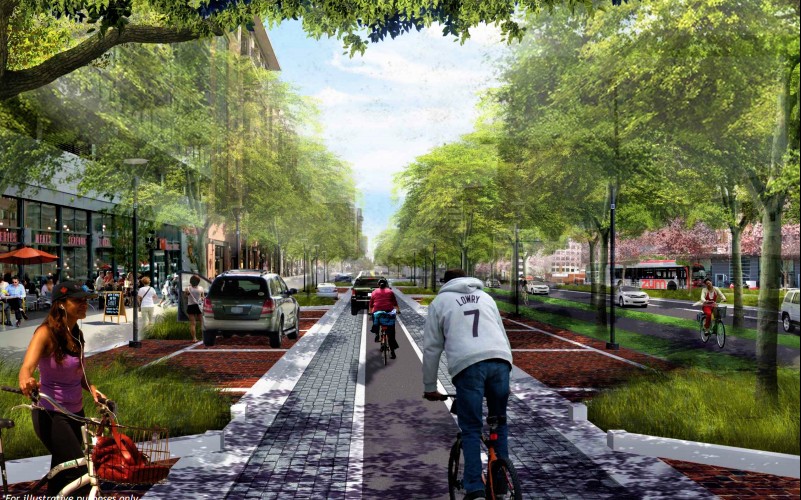
Brampton floats idea of boulevard instead of highway for Heritage Heights; is it realistic?
In the classrooms of the 18th Century, children wrote on pieces of slate. Using some kind of soapstone or chalk as a pen, they would jot down their ideas and work on their education. At the end of a lesson, they could use a damp cloth to wipe away their scribbles and begin again on a new, clean surface.
This is where the phrase “to wipe the slate clean” comes from. But it’s used in all kinds of scenarios. However, one realm where it’s rare is planning.
Generally, city builders in Canada are forced to work with what they have, reshaping or adding onto what came before, instead of starting again. Their job is to make incremental changes to improve the life of the city’s residents.
The City of Brampton is unique among its GTA counterparts for possessing one final clean slate.
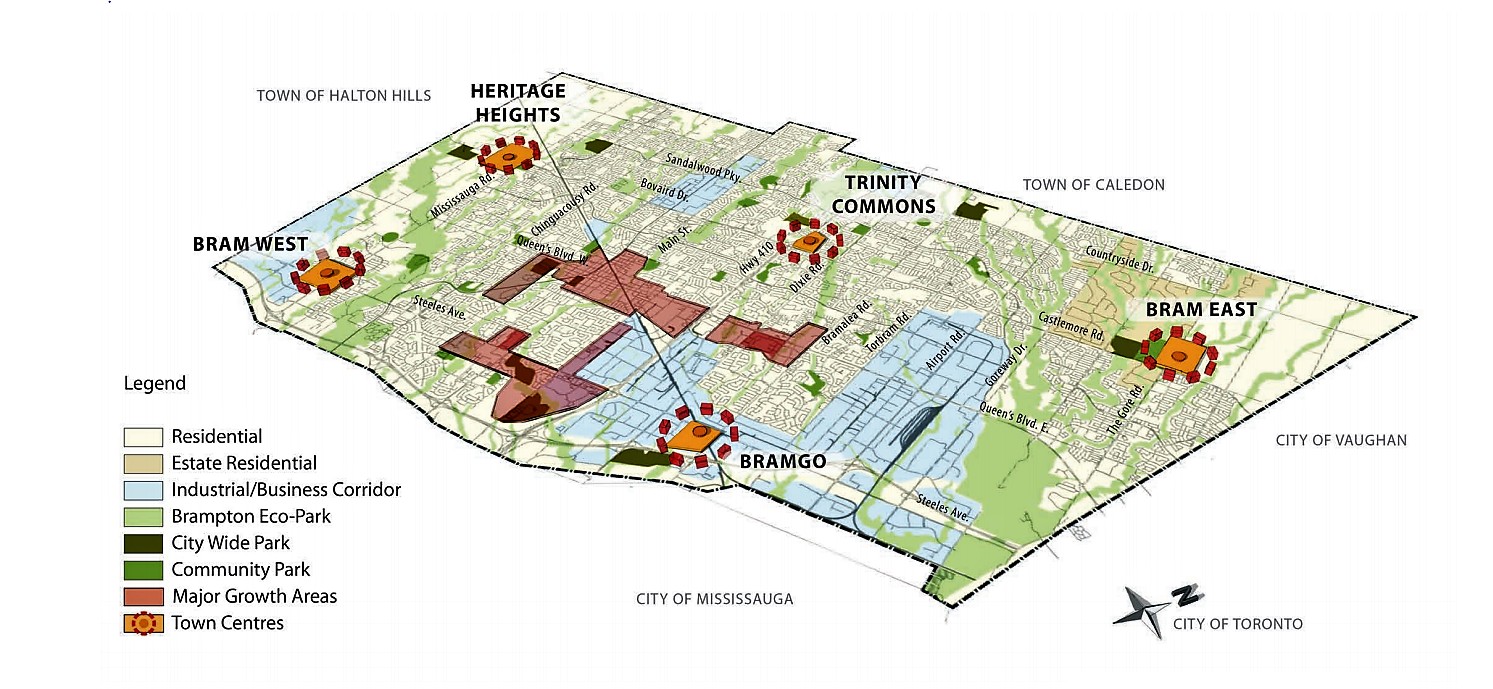
The area known as Heritage Heights makes up about 17 square kilometres (five times the size of New York City’s Central Park) of the city’s total land mass and is the final development frontier for Brampton.
As a city that has broken almost every good law of planning to date, it's a final shot at redemption.
In its development so far, the city has sprawled outwards with kilometre upon kilometre of subdivisions. Single family homes with large driveways perpetuate the city’s reliance on the car, a need for big highways and a failure to keep its residents fit. It's the kind of planning the Intergovernmental Panel on Climate Change (IPCC) explicitly called out for its contribution to rapid global warming.
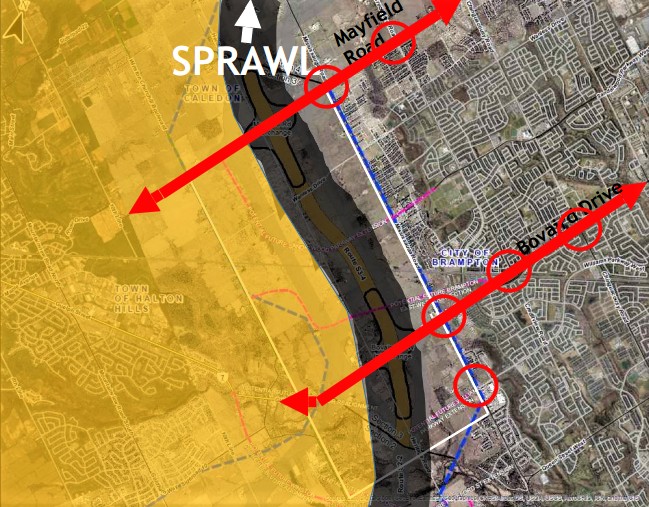
The sprawl-inducing proposed highway corridor
Despite a verbal commitment to fight for the planet, Brampton has shown little sign of reversing its unhealthy planning habits.
In 2019, the City of Brampton issued building permits for 911 units within apartment buildings compared to 928 units in townhouses and 893 single detached homes. Based on recent years, 2019 was a dense and progressive year by Brampton’s standards.
In 2018, for example, under the previous city council, just 3 percent (83 units) of all building permits approved went to houses in apartment buildings. That year 333 townhouses were offered permits and 684 single-detached homes. In 2017, 39 percent of all approved units in Brampton were single-detached dwellings occupying their own spot of land. That year 233 apartments were given permits compared to 334 stacked townhouses, 608 regular townhouses and north of 1,000 singles.
Wiping the slate clean is proving difficult. Faced with bad planning history, Brampton has thus far failed to coax modernity from its suburban past.
The key question, as the city plans for a future it says it hopes will be walkable and not rely on the car, is will it get things right with an opportunity to build from scratch?
Early planning at city hall has earmarked Heritage Heights for a hospital, GO station and unusual provincial highway.
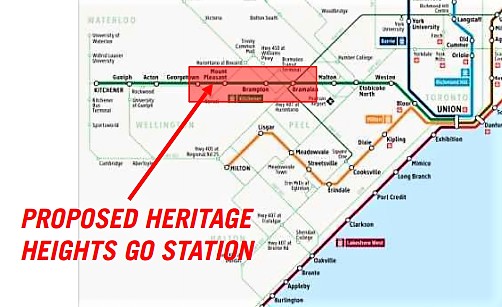
The area was identified in Brampton’s 2040 Vision as key to the city’s future. The Vision was created by award winning pioneer of the Vancouverism movement Larry Beasley, who was tasked with creating a blueprint for the city’s future.
In a consultation with more than 13,000 residents, Beasley and his team created a plan for the city. Anchored around the concept of small, walkable communities instead of the car, the document showed Brampton as a dense, tall urban model rather than a sprawling former suburbia. To achieve this, it identified five areas that would act as local town centres; Heritage Heights was one of them.
“Five new Town Centres will form a constellation, arrayed around central Brampton,” the document explains. “In the northwest, a new development node in Heritage Heights will host a third Brampton hospital.”
Two years after it was mentioned in the 2040 Vision, the city is now working toward more concrete proposals to finalize exactly what it will look like. In November, that process was started with an invitation for residents to contribute their ideas to the project, events that offered Bramptonians a chance to jot ideas onto one of the city’s last remaining blank canvases.
“The 2040 Vision aims to bring about real change in how we plan, including looking at all development as part of a whole,” Martin Medeiros, Regional Councillor and Chair of the Planning and Development Committee, said at the time. “By working closely with stakeholders and residents from every experience and background, it is our goal to help ‘complete’ a Brampton that reflects the wants and needs of the people who live here.”
Changing how people move is at the heart of what council is currently considering for the new area.
The GO Transit Kitchener Line, which includes stops in Bramalea, downtown Brampton and Mount Pleasant, passes through the Heritage Heights lands. The proposed GTA-West Corridor (or Highway 413) also borders the land and is the key to its planning justification.
During a council workshop around the visioning for what Heritage Heights might look like, staff at the City of Brampton suggested a new GO station could be the centre of the new community. Such a plan would work toward the goal of moving away from a park and ride model of GO usage, toward locating more dense housing closer to smaller stations, so cars and parking lots are not needed. If approved, the existence of a GO station would also allow Brampton council to mandate affordable housing and to build much higher density housing around the station.
While the GO station would be an impressive step in a sustainable direction for Brampton, it is the controversial GTA-West Corridor that is the real reason for finally developing the area. The corridor is proposed to run west from Vaughan through Caledon, then arc southwest, skirting the western side of Brampton on its way toward the 401/407 between Mississauga and Milton.
Environmental activists and locals have advocated against the 4-series corridor, which will spring many new areas for development, arguing the highway will spawn more sprawl, more gridlock and more toxic fumes.
Staff at the City of Brampton, perhaps conscious the highway is not in line with their 2040 Vision, have proposed a radical break from what many imagine the highway will look like.
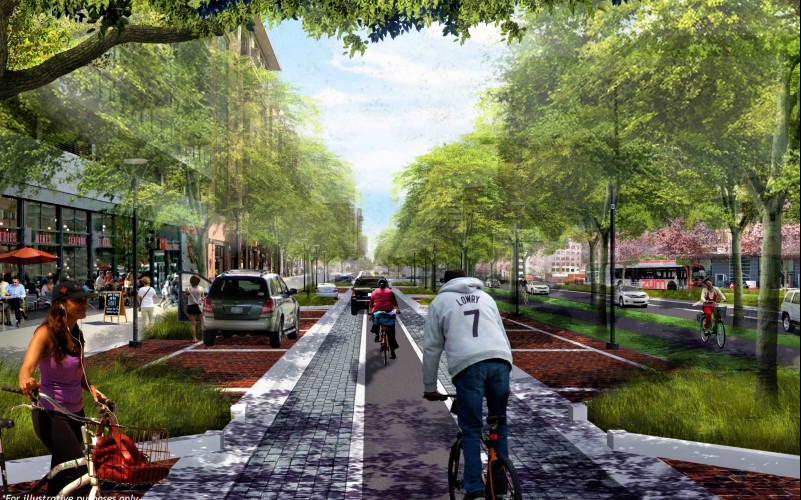

At a May 25 workshop with councillors, staff outlined a boulevard instead of a highway. They highlighted how the design of traditional highways, with few entries and exits, would put pressure on just a few local roads, while it would also induce sprawl. Making reference to a variety of studies, staff’s work built on the idea that the time for action on climate change is now.
The proposal is the very opposite of what many fear the GTA-West will create. The concept features active transportation on both sides, local roads, faster bypass routes, a freight corridor and bus rapid transit lanes. The road was even shown in a counterflow model to encourage safer driving and more natural turns.
Perhaps most significantly, instead of the isolating effect of major highways, which create cut-off subdivisions and divided urbanscapes that force people into cars and allow for very little integrated commercial activity, the plan would create walkable, vibrant, dense mixed-use neighbourhoods.
The plan is, of course, at a very early stage. Staff at city hall used terms such as “Vision Planning” for the workshop that took place, an opportunity to reach for the sky.
The 2040 Vision showed similar lofty ambition and is yet to see any concrete steps. There is a danger its imaging of Heritage Heights and the GTA West Corridor as dense, walkable communities could be similar sugar coating.
“The Brampton 2040 Vision depicts a vibrant and sustainable future for Brampton,” Regional Councillor Michael Palleschi told The Pointer. “A key piece of that Vision is the creation of satellite, compact, vibrant town centres – including for Heritage Heights. Realizing the 2040 Vision will not happen all at once. The approach that is being applied to the planning of Heritage Heights exemplifies the principles of the 2040 vision and I, as well as staff, are committed to seeing the vision through. We are excited about the opportunity to work with landowners and relevant stakeholders in a collaborative manner to see positive change happen for Heritage Heights.”
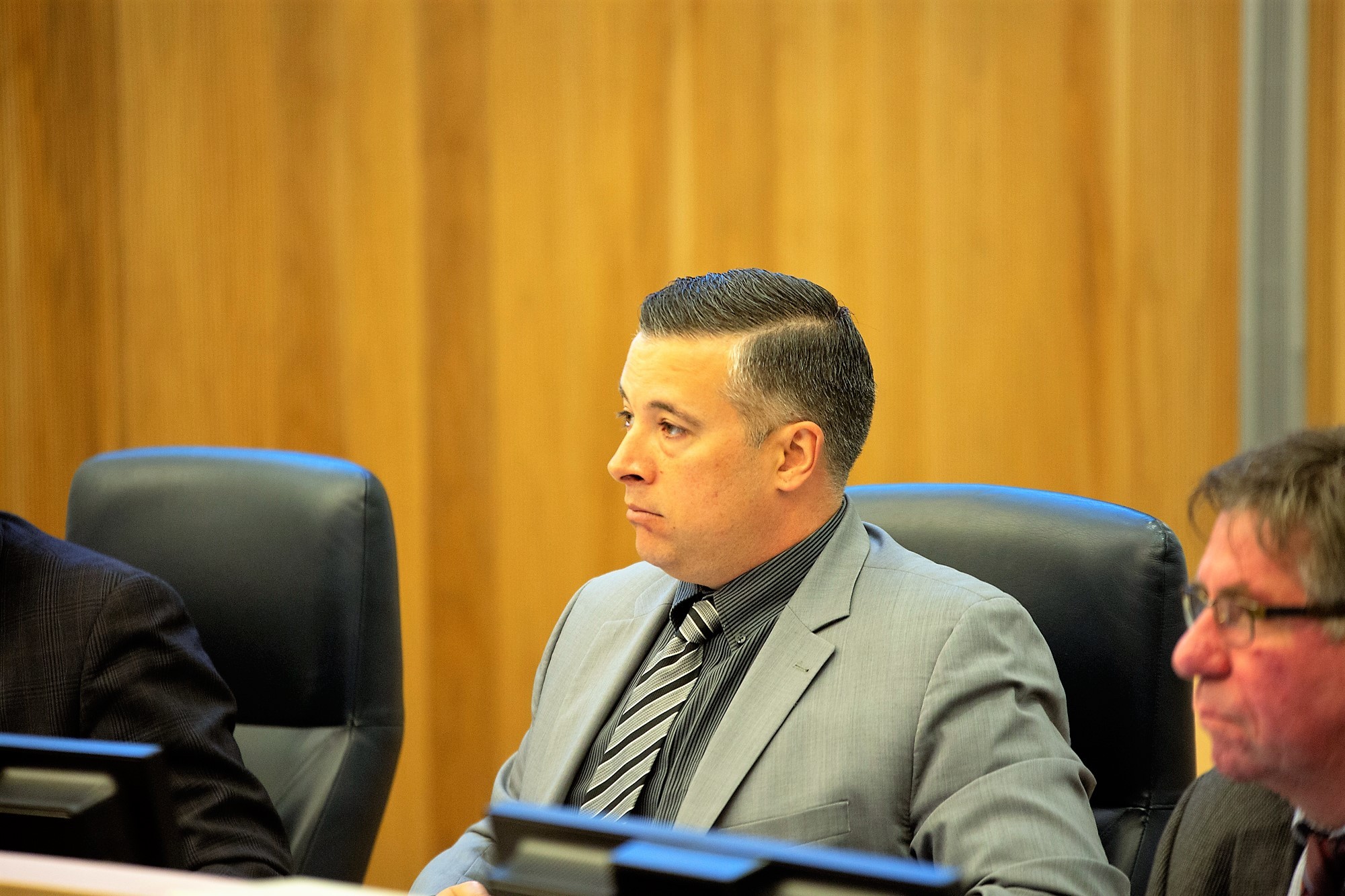
Brampton and Regional Councillor Michael Palleschi
As a provincial highway, Brampton has very little jurisdiction of how the GTA-West Corridor is built. Aside from lobbying and pleading, it bears next to no role in the task.
The will of Premier Doug Ford, who has not proven to be transit’s best friend, and the profit motives of hungry developers stand in the way. For a council that supported the environmental assessment for the GTA-West Highway, helping pave the way for its sprawling corridor, at the same meeting it declared a climate emergency, creating a revolutionary urban plan around a 4-series thoroughfare seems a tall order.
Council’s commitment to its 2040 Vision will be seen by many to live or die based on the development of Heritage Heights. If Brampton can’t achieve walkable communities and density in an empty field, working from scratch, it probably can’t do it anywhere. But, if the area is a success, it could lead the way to changes in planning across the city.
Email: [email protected]
Twitter: @isaaccallan
Tel: 647 561-4879
Submit a correction about this story


